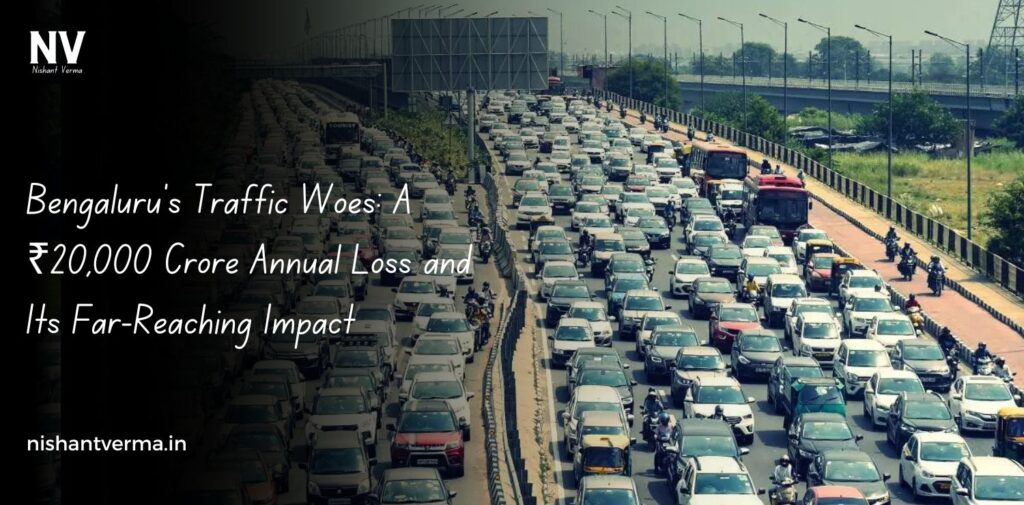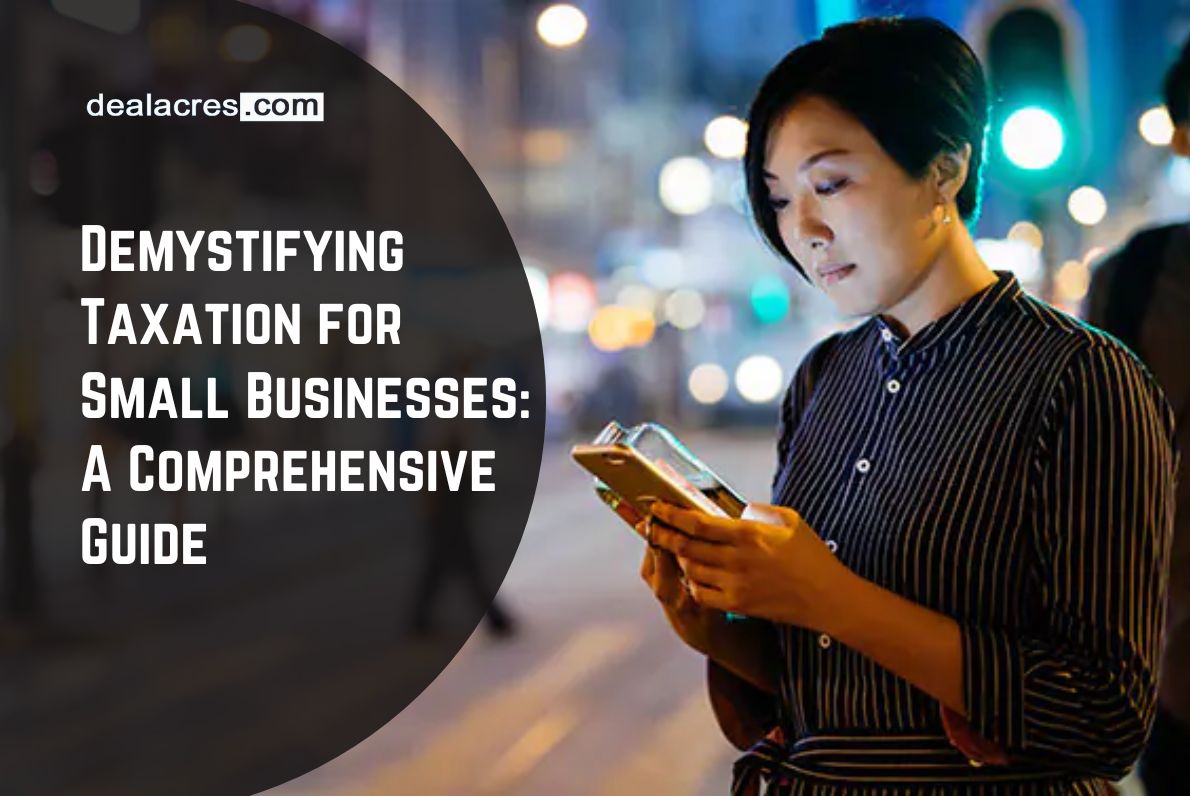Bengaluru, India’s Silicon Valley, is known for its booming IT sector, innovative startups, and cosmopolitan lifestyle. But alongside its rapid growth and development, the city faces a significant and growing problem: traffic congestion. The Bengaluru Traffic Woes are not just a minor inconvenience—they result in an estimated ₹20,000 crore annual loss to the economy. This article delves into the major causes of Bengaluru’s traffic congestion, the ripple effect on the economy, and potential solutions to mitigate the crisis.
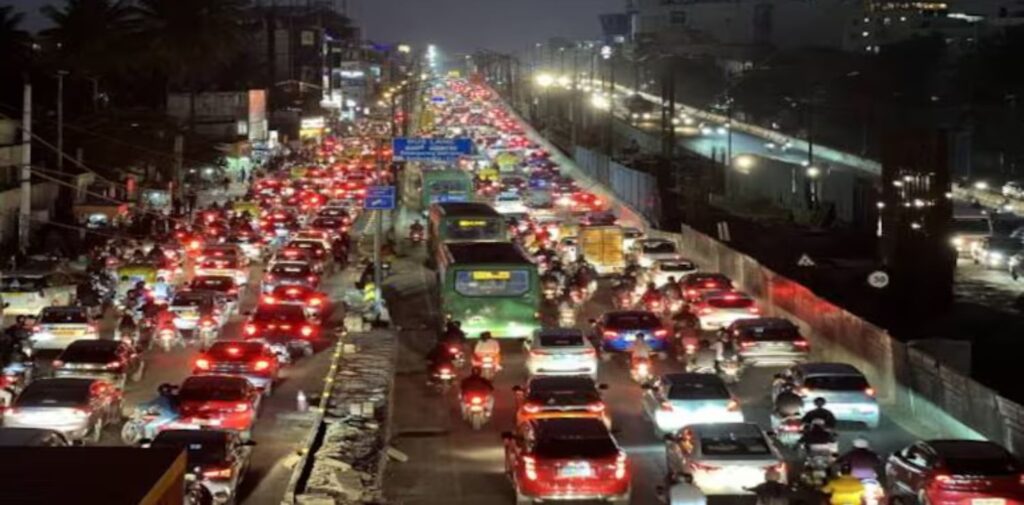
The Financial Cost of Traffic Congestion
To fully grasp the magnitude of the ₹20 000 crore loss due to traffic jams, it’s important to understand how this figure is derived. Traffic congestion in Bengaluru leads to:
- Lost Productivity: Long hours stuck in traffic reduce the number of effective working hours. This impacts employee productivity, especially in sectors like IT, where time is a critical asset.
- Fuel Wastage: Idling in traffic increases fuel consumption, leading to higher expenses for both individuals and businesses. This wasted fuel contributes to the financial burden on citizens and worsens pollution levels.
- Increased Transport Costs: Delivery services, logistics, and other businesses relying on transportation experience delays, leading to inefficiencies and higher operating costs.
- Wear and Tear on Vehicles: Traffic congestion causes more frequent stopping, starting, and slow driving, increasing wear and tear on vehicles, resulting in higher maintenance costs for citizens and businesses alike.
The compounded effect of all these factors creates a staggering loss of ₹20000 crore every year, making traffic congestion one of the most significant economic burdens for Bengaluru.
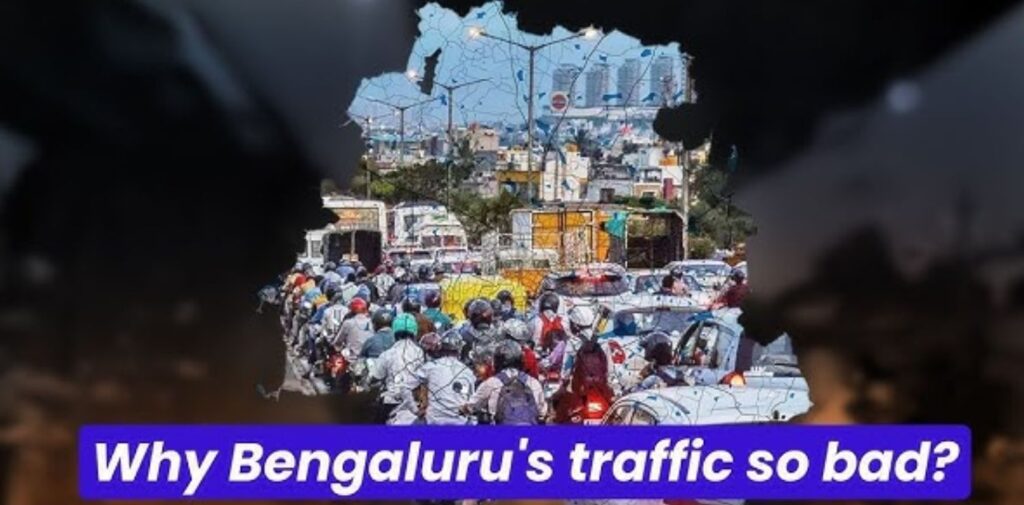
Why Is Bengaluru’s Traffic So Bad?
There are several reasons why Bengaluru’s traffic is among the worst in India:
- Rapid Urbanization: Bengaluru’s rise as an IT hub led to an influx of people from across the country and the world. The city’s population exploded from 5.7 million in 2001 to over 12 million today. The infrastructure, however, has not kept pace with this rapid growth.
- Poor Road Infrastructure: The road network in Bengaluru is often cited as a major cause of traffic jams. Narrow roads, potholes, and poorly maintained flyovers add to the congestion. Many parts of the city lack proper planning for modern-day traffic demands.
- High Vehicle Density: The number of vehicles on Bengaluru’s roads has skyrocketed in the past decade. Currently, there are over 10 million registered vehicles in the city, and this figure is growing. The high vehicle density, coupled with insufficient parking spaces and narrow roads, exacerbates traffic jams.
- Lack of Efficient Public Transport: While Bengaluru does have public transport options, including buses and a metro system, they are far from sufficient to meet the city’s needs. The metro network, though expanding, covers only a fraction of the city, and buses often get stuck in the same traffic as private vehicles, making them a less attractive option.
- Unplanned Construction and Roadwork: The constant digging for metro work, road repairs, and other construction projects further clogs the already congested roads. Delayed completion of these projects compounds the problem.
- Inconsistent Traffic Management: Poor traffic management is another contributor. Traffic signals are often poorly timed, and a lack of enforcement of traffic rules leads to chaotic driving conditions. Unauthorized parking, jaywalking, and haphazard lane usage further contribute to the congestion.
The Ripple Effect of Traffic Congestion
The ₹20,000 crore annual loss is just the tip of the iceberg. Traffic congestion in Bengaluru has several broader consequences:
- Impact on Mental and Physical Health: Spending hours in traffic takes a toll on people’s mental and physical well-being. Studies show that long commutes contribute to increased stress, anxiety, and fatigue. Moreover, being stuck in traffic for extended periods leads to musculoskeletal problems and exposure to higher levels of air pollution, which can cause respiratory issues.
- Decreased Quality of Life: Long commuting times reduce the amount of time people can spend with their families or on personal activities, negatively affecting their quality of life. The city’s traffic jams make it difficult for residents to balance work and personal life, contributing to frustration and dissatisfaction with the urban lifestyle.
- Environmental Degradation: Bengaluru’s traffic congestion contributes significantly to air pollution. The excessive fuel consumption due to idling vehicles increases carbon emissions, making the city’s air quality worse. This environmental degradation has long-term consequences for public health and the city’s livability.
- Economic Competitiveness: Bengaluru’s traffic problems are also affecting its attractiveness as a business destination. Companies are beginning to factor in the city’s infrastructure challenges when deciding where to set up or expand operations. Traffic congestion can deter potential investors, limit job creation, and slow down the city’s economic growth.
- Higher Transportation Costs for Businesses: For businesses relying on logistics and transport, traffic congestion means delays in deliveries, missed deadlines, and increased costs. In sectors like e-commerce and food delivery, this directly affects customer satisfaction and operational efficiency.
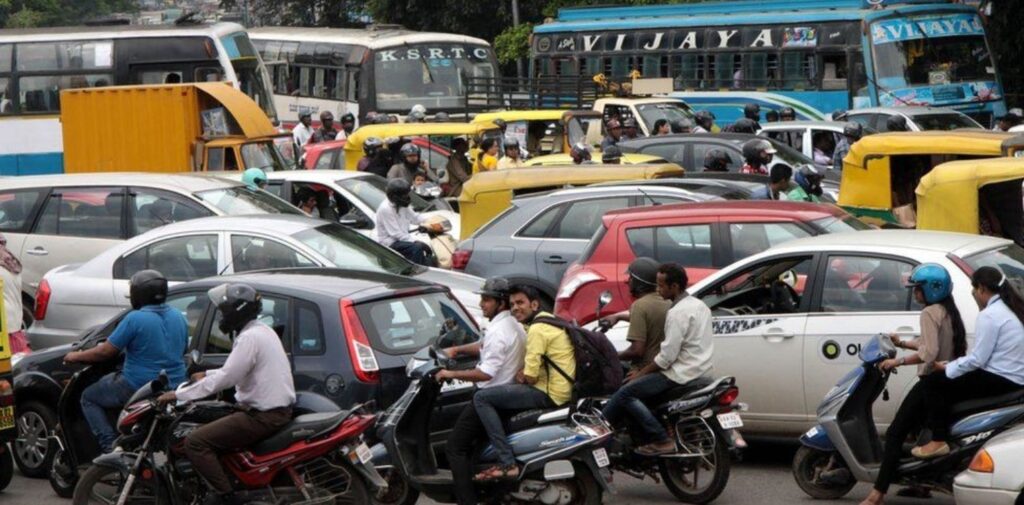
Solutions to Bengaluru Traffic Woes
Addressing Bengaluru’s traffic congestion requires a multi-faceted approach. Some potential solutions include:
- Expanding Public Transport: A key solution is to enhance the city’s public transport infrastructure. The metro system needs to be expanded to cover more areas of the city, and bus services need to be made more reliable. Dedicated bus lanes, frequent services, and better coordination between different modes of public transport can encourage more people to leave their private vehicles at home.
- Improved Traffic Management: Better traffic management can help ease congestion. This includes better signal coordination, stricter enforcement of traffic rules, and intelligent traffic management systems that can dynamically manage traffic flow based on real-time conditions.
- Carpooling and Ride-Sharing: Promoting carpooling and ride-sharing services can reduce the number of vehicles on the road. Apps and incentives that encourage people to share rides could play a big role in decreasing traffic congestion.
- Road Infrastructure Improvements: The city’s road infrastructure needs to be upgraded to handle the increasing traffic. This includes widening roads, fixing potholes, creating more flyovers, and ensuring smoother traffic flow. Simultaneously, creating designated parking spaces and reducing illegal street parking can free up road space.
- Work-from-Home Policies: The COVID-19 pandemic showed that work-from-home arrangements could reduce traffic congestion. Encouraging flexible working hours and remote work can ease the pressure on the city’s roads, especially during peak hours.
- Smart Urban Planning: To address long-term challenges, Bengaluru needs to invest in smart urban planning. This includes creating satellite towns and decentralizing business hubs to reduce the need for daily commuting across the city. Green spaces, pedestrian-friendly zones, and dedicated cycling lanes can also be part of the solution.
Conclusion: Bengaluru Traffic Woes
Bengaluru’s traffic congestion is not just an inconvenience—it’s a serious problem that costs the city ₹20,000 crore every year. The impact of this congestion goes beyond lost productivity and fuel wastage, affecting the quality of life, the environment, and the city’s economic competitiveness. To reclaim its status as a leading global city, Bengaluru must invest in expanding public transport, improving infrastructure, and embracing smart city planning. Solving this problem is not just about easing commutes—it’s about securing the future of one of India’s most important urban centers.

